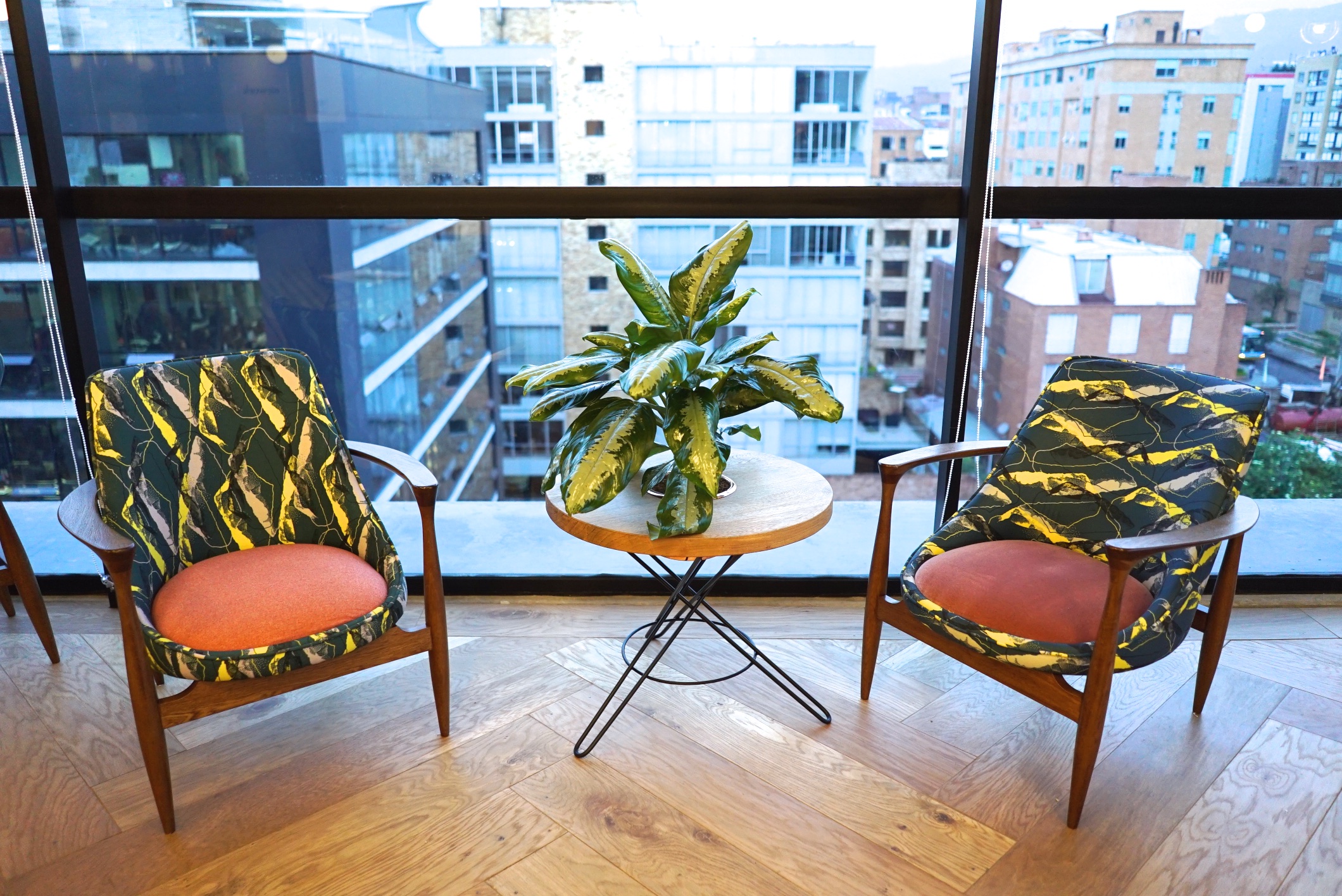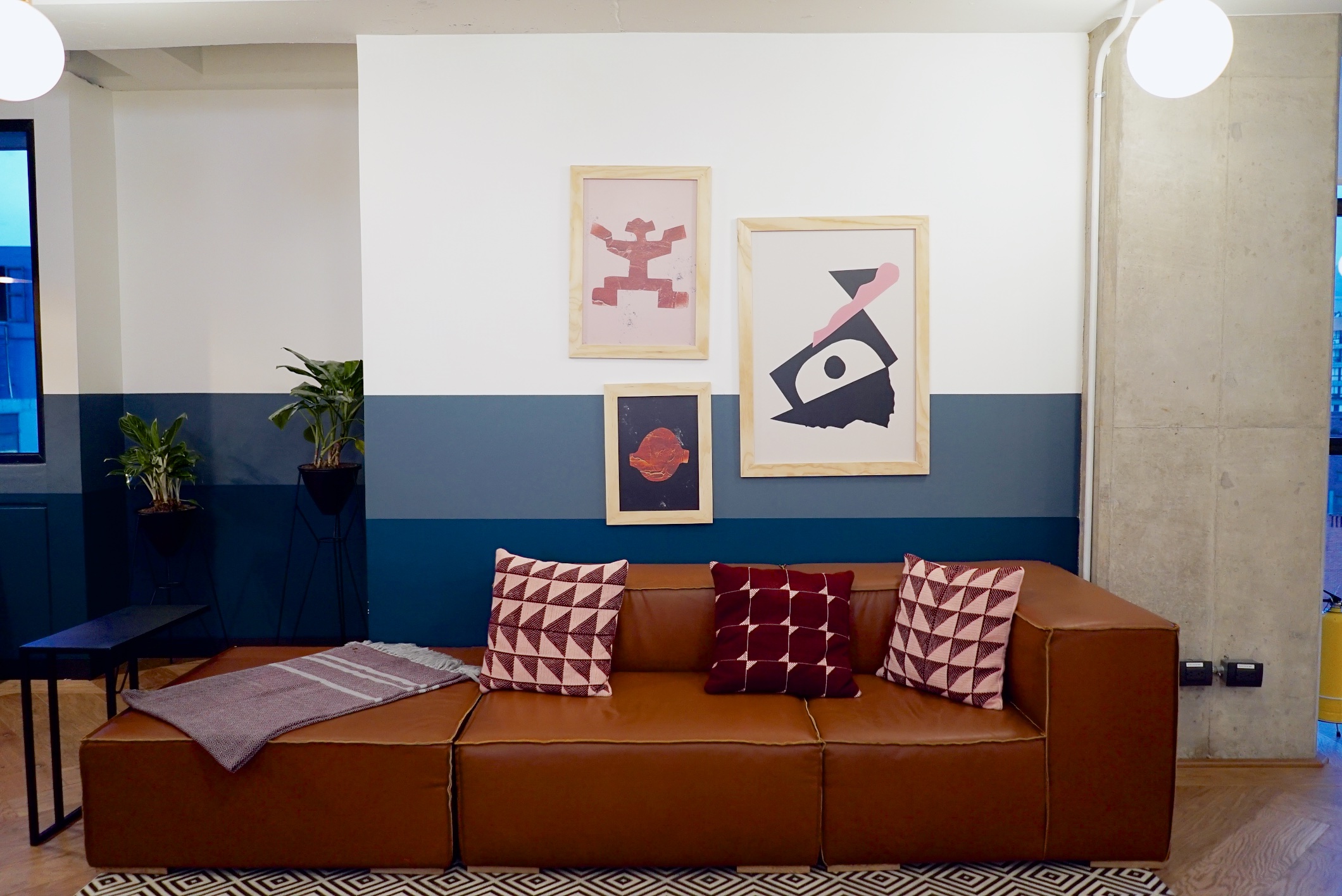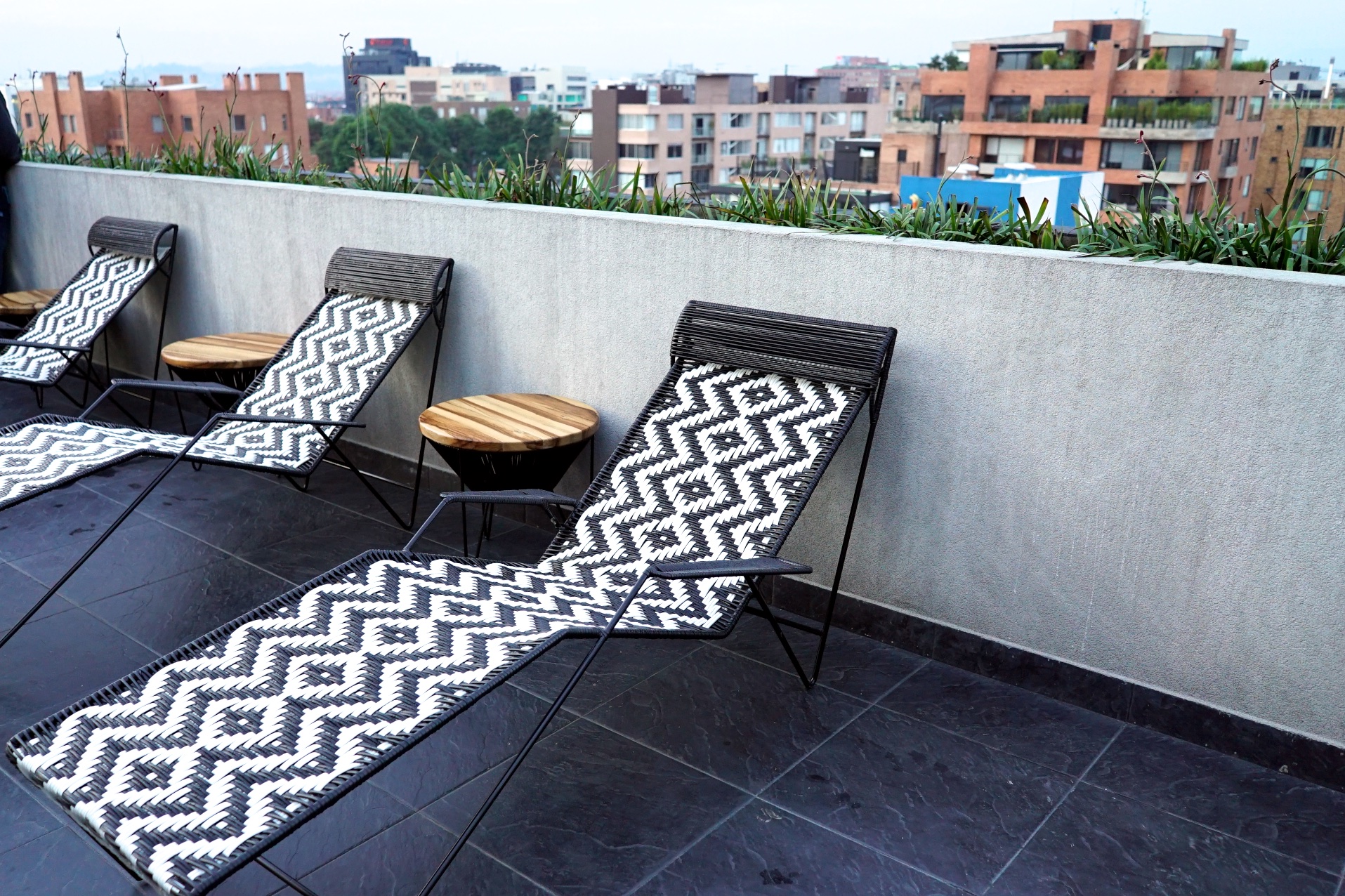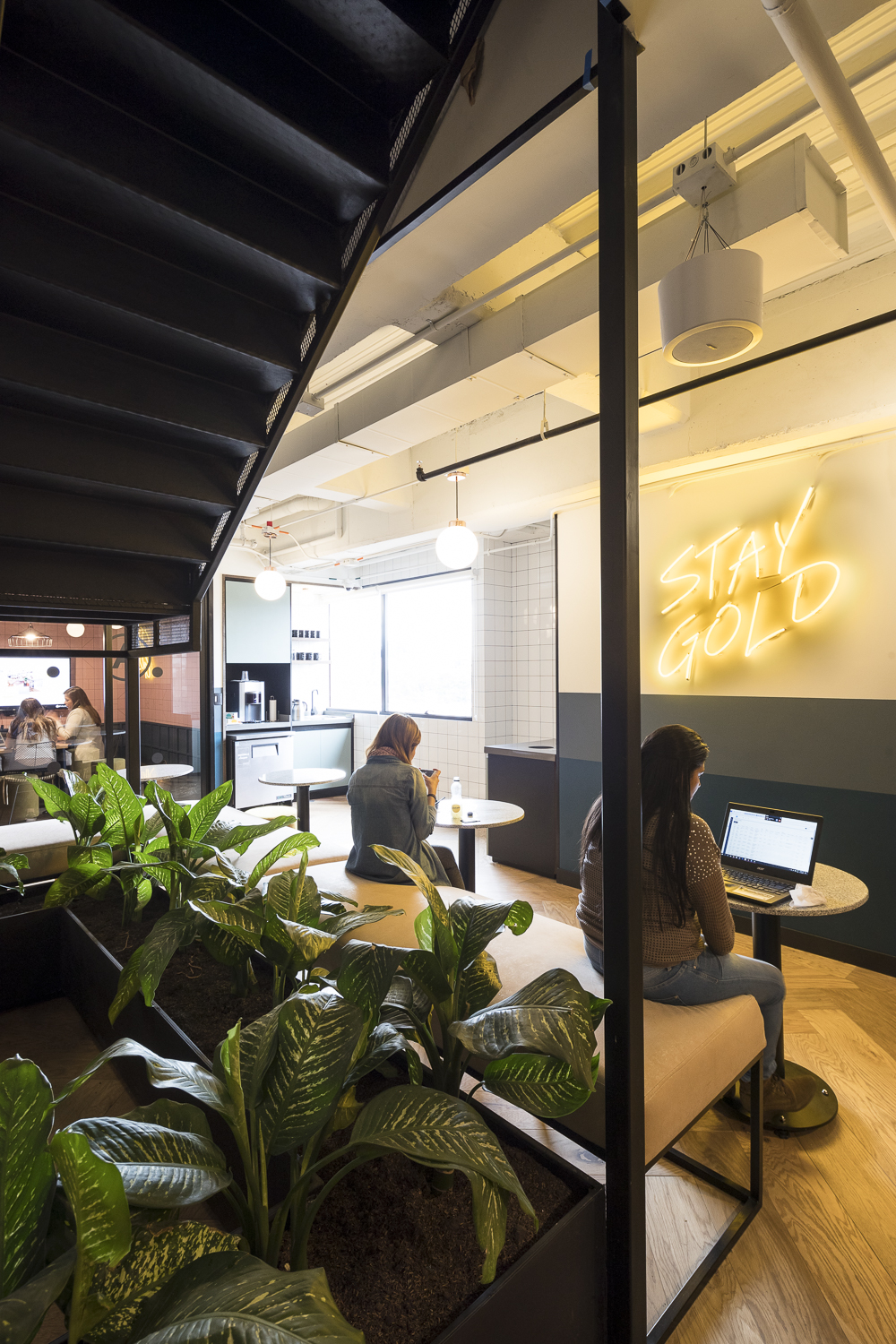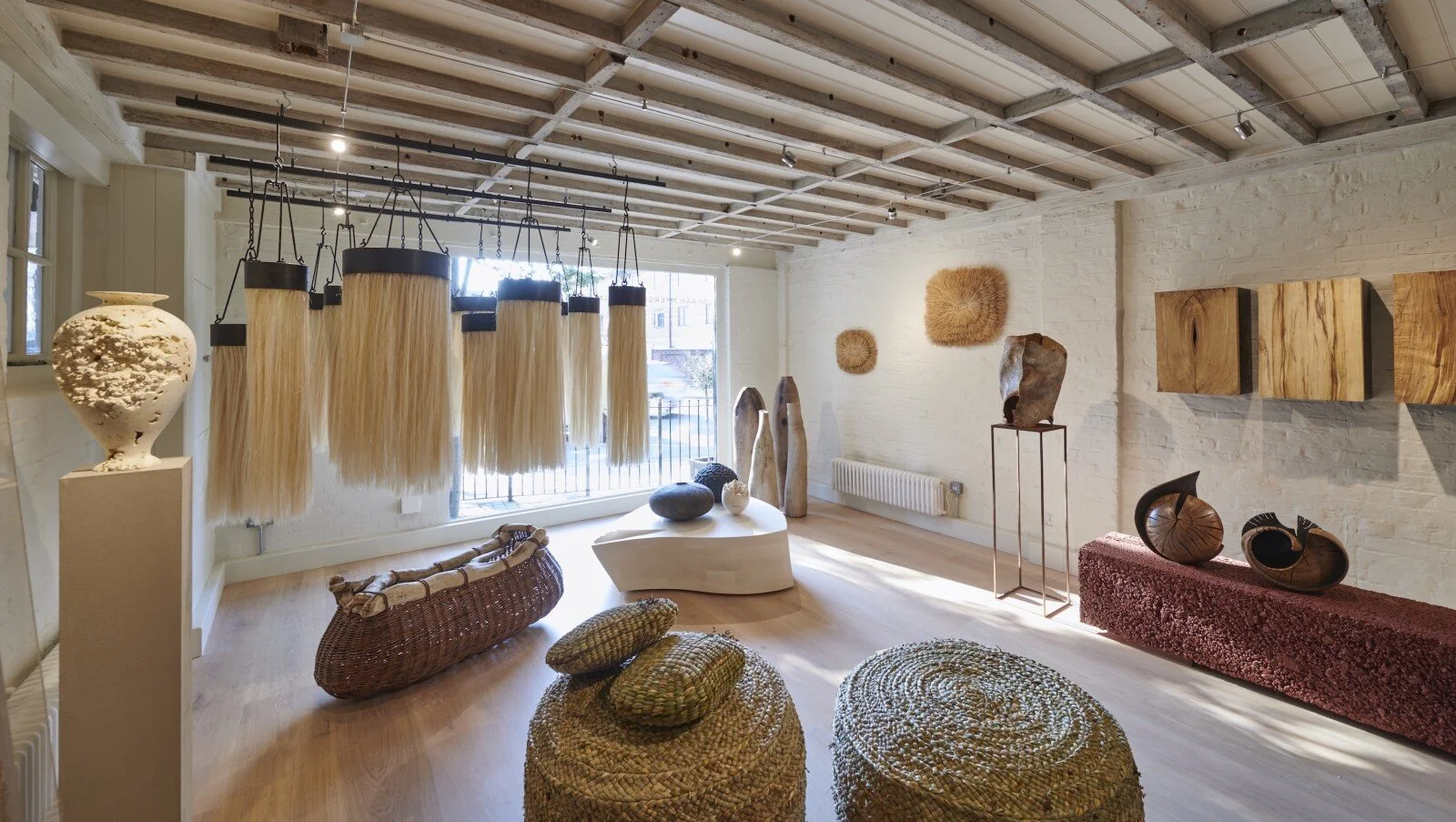WeWork arrives in Colombia
WeWork's reception pays tribute to Bogotá, "The City of Brick" with a front desk made of stacked bricks.
Last month saw the launch of WeWork La 93 in Bogotá, the first of several Colombia-based locations for the world’s fastest-growing provider of shared workspaces. Owned solely by WeWork, the 10-floor building located nearby the buzzing Parque de la 93 has the capacity to accommodate 1300 members, with UberEats, Rockstart and Fitpal among its most notable tenants.
Based in New York City and valued at $20 billion, WeWork offers idealistic millennials and established professionals alike the opportunity to work in a collaborative office space offering city views, sunny terraces, 24-hour accessibility, free coffee and beer, daily networking events, trendy interiors, and eight different types of spaces to work or play in.
The signature WeWork nooks allow for collaboration or solitary work.
The company’s counterpart in Latin America, WeWork LatAm, was started in 2015 in Mexico City and since then, has expanded to Argentina, Brazil and now Colombia, totaling 19 locations which are expected to grow to more countries in 2018.
We spoke with Cristina Crespo, Design Director for WeWork LatAm, who revealed why design is key at WeWork and how she adapted the company’s branding to local talent and influences.
"Latin America has had to build itself from the ground up in every respect, creating many products from zero."
- Cristina Crespo, Design Director, WeWork LatAm
How did you approach the La93 project and what was your strategy upon entering Colombia?
My strategy as the designer for this project was to enter Bogotá and establish relations with emerging local designers, some more established than others, in order to create a design catalog that would reflect local culture. The idea is that when any member, from any other WeWork around the world, enters this location, they will be able to identify the WeWork brand because there are certain themes that will always remain consistent, but much of the design will have the local “cultural flair” and speak to Colombian talent.
For example, at La93, we worked with Bogota-based street artist Ledania, who creates larger than life, colorful murals. Her work is the first thing you see when you walk into the lobby. Other local designers we worked with were Folies, Perceptual, Diamantina y La Perla, Zientte, Tucurinca, Gres and Las Heroínas for furniture and accents, and 5AM and Vida Útil for lighting. This is an approach we often use in Latin America.
What were the biggest challenges you came across in the Colombia región?
Each region has its own challenges, and in Latin America we get the opportunity to create everything from zero. Imports will get stuck at the port or we will get charged extra taxes, and these challenges motivate us to be more creative within the market we are working in.
Whereas in other regions we can stock up on products from China, resulting in a much more uniform design, Latin America has had to build itself from the ground up in every aspect, creating everything from zero because of these types of challenges.
Conference rooms are available on every floor and an be reserved to suit users' needs.
Why do you think design plays such a fundamental role in WeWork’s culture?
Good design is an essential component of WeWork's ethos.
The company was founded by two partners, Adam Neumann, a businessman from Israel, and Miguel McKelvey, an architect from Portland. So the fact that one of the co-founders is an architect has helped a lot, as one of our core values has always been design as a present feature of the space.
Another thing that differentiates WeWork from other companies is that we have an in-house team based in New York called the “user experience team,” in charge of capturing what’s not working in the spaces, and figuring out how we can change and improve the products. This is done through constant feedback from members. We take this feedback and invest it into new standards that allow us to develop novel products and evolve traditional ones. wework.com





